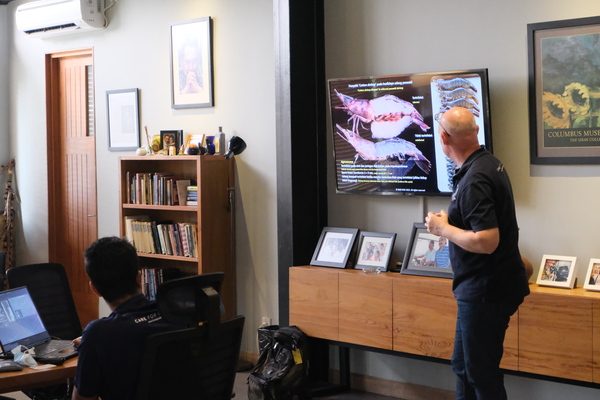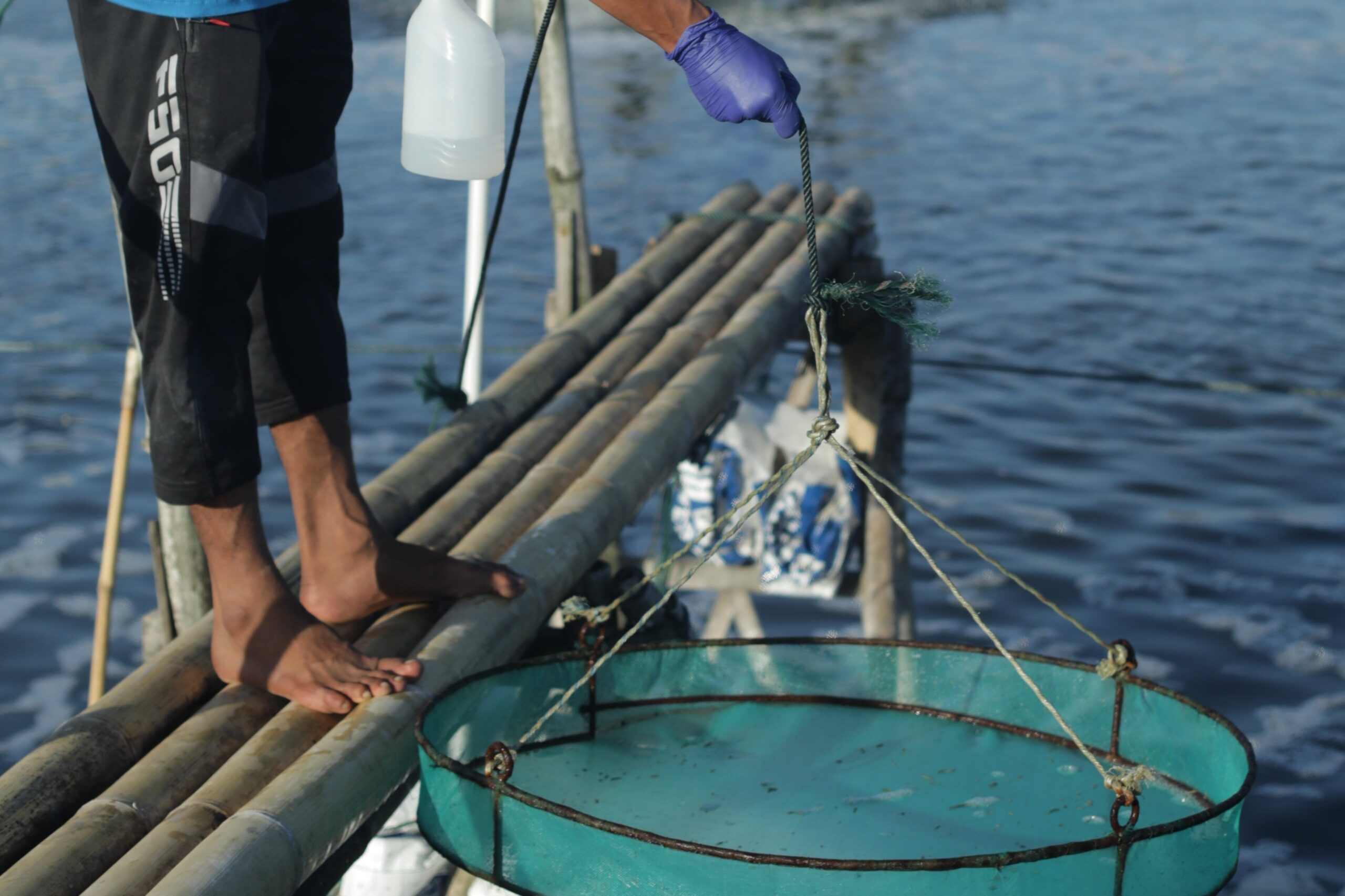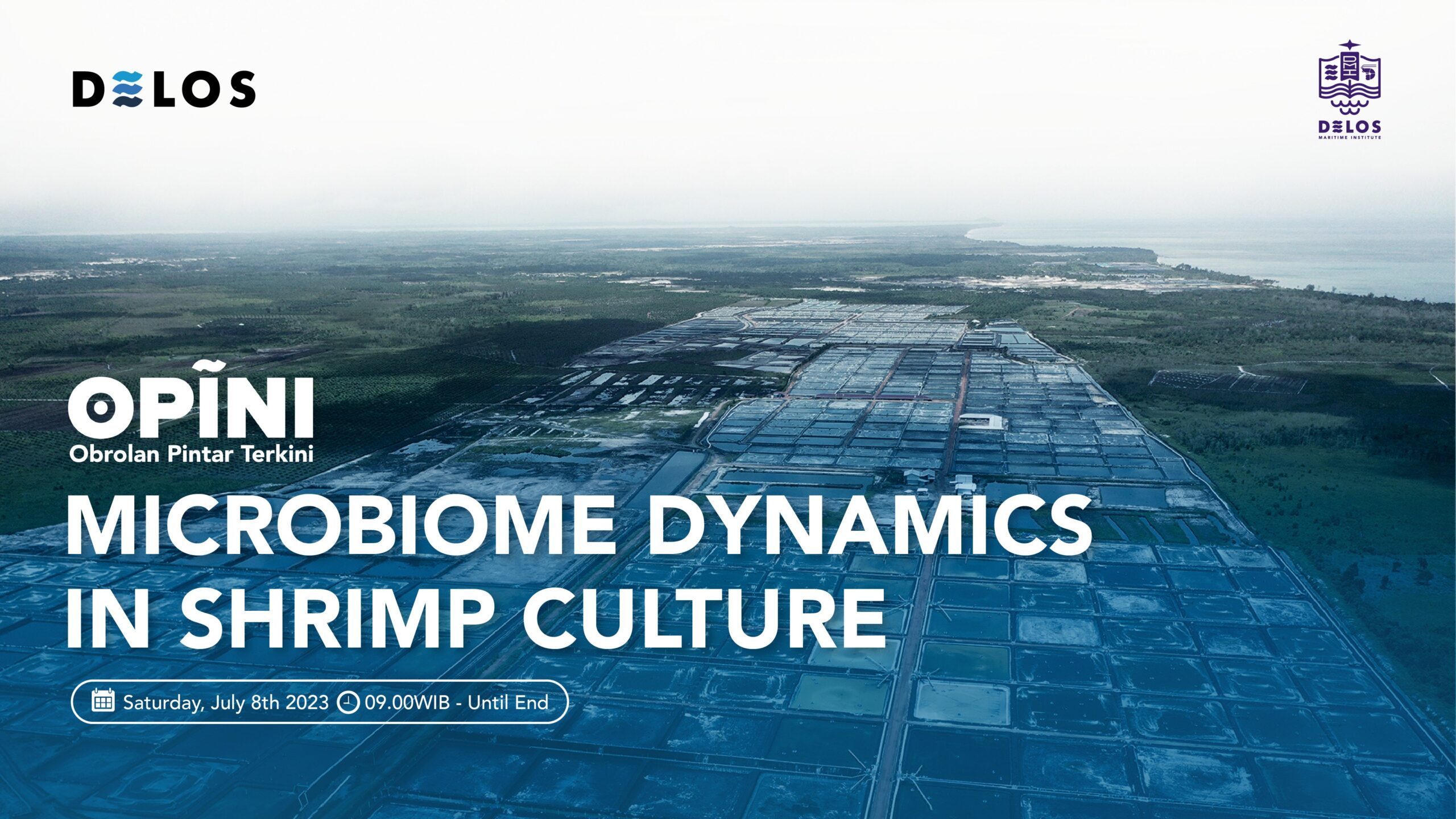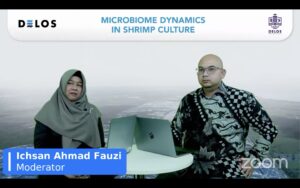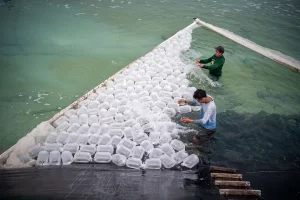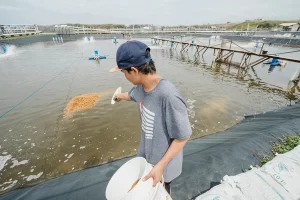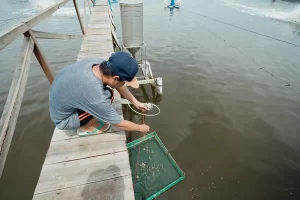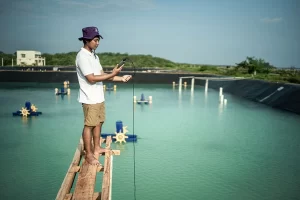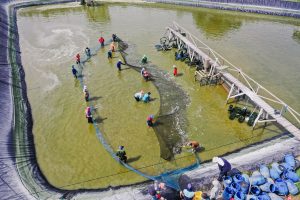How to Prevent Disease Spread in Shrimp Farms?
Knowing how to prevent the disease spread in shrimp ponds is essential for shrimp farmers. This is due to the high economic losses that can result from disease outbreaks.
Several steps can be taken by shrimp farmers to prevent disease spread, including selecting disease-free shrimp seed, controlling shrimp populations, managing water quality, providing proper feed and feed additives, and implementing strict biosecurity measures.
Let’s delve into the details in the following article!
Also Read: Understanding Sampling in Shrimp Farming and Its Benefits
How to Prevent Disease Spread in Shrimp Farms
1. Selecting Shrimp Seed
The quality of shrimp seed is crucial in shrimp farming. Besides genetic quality, it is essential that the shrimp used are free from diseases before starting cultivation. To ensure disease-free seed, farmers can conduct microscopic analysis and PCR tests on the shrimp seed to be used.
2. Controlling Shrimp Population
Overpopulation in shrimp ponds can lead to resource competition and stress in shrimp, making them more susceptible to infections. Therefore, it is essential to control the shrimp population in ponds through measures such as:
a. Proper Stocking Density
Avoid overstocking the ponds. Consider pond size, environmental carrying capacity, and farming technology before adding shrimp populations.
b. Monitoring and Testing
Regularly monitor and conduct laboratory tests to identify potential diseases in the shrimp population. If signs of infection are detected, prompt mitigation and treatment measures should be taken to prevent further spread.
Also Read: Causes and Ways to Overcome Stress in Vannamei Shrimp
3. Managing Water Quality
Poor water quality can cause stress in shrimp, leading to weakened immune systems and increased susceptibility to diseases. Therefore, managing water quality is key to preventing disease spread in shrimp ponds.
Some actions to take in water management include:
a. Regular Checks
Farmers should routinely measure water quality parameters such as temperature, salinity, pH, dissolved oxygen, ammonia, nitrate, nitrite, alkalinity, and hardness. Regular checks can help identify changes that may affect shrimp health.
b. Adjusting Water Quality Parameters
Based on the measurement results, farmers should take action to improve any suboptimal water quality parameters. Treatments can be adjusted according to which water quality parameters need optimization.
4. Using Proper Feed and Feed Additives
The quality of the feed provided is essential for enhancing shrimp immunity. Poor-quality feed or feed that doesn’t meet their nutritional needs can weaken the shrimp’s immune system, making them more vulnerable to diseases. Farmers should ensure that shrimp receive feed with complete nutritional value to support growth and immune functions.
High-quality feed with suitable nutrient content for specific shrimp developmental stages should be used. Additionally, shrimp immunity can be supported by providing appropriate feed additives such as immunostimulants and probiotics. If there are signs of diseases in the shrimp, farmers should consult aquaculture experts or fish veterinarians for accurate diagnosis and proper disease management measures.
5. Implementing Strict Biosecurity
Implementing biosecurity measures is of utmost importance in preventing disease spread in shrimp ponds. All potential sources of disease transmission, whether from within or outside the pond environment, should be minimized.
a. External Biosecurity
Restrict access of outsiders to the shrimp ponds, and ensure that all shrimp farm equipment and vehicles entering the area are properly cleaned and sterilized to prevent disease transmission through external contamination.
b. Internal Biosecurity
Keep the shrimp farming environment isolated from other animals suspected of being carriers or disease vectors. Additionally, during pond changes, all workers should disinfect their hands and the equipment.
Also Read: The Importance of Alkalinity in Shrimp Ponds, Check Your Alkalinity Now!
Learn and Prevent Shrimp Diseases Early with DELOS!
Shrimp diseases are one of the most damaging factors in aquaculture. They can cause massive shrimp mortality and lead to economic losses due to crop failure.
Therefore, it is essential for shrimp farmers to take early disease prevention measures, such as selecting disease-free shrimp seed, controlling populations, managing water quality, using proper feed and additives, and implementing strict biosecurity.
If shrimp diseases occur in your ponds, contact DELOS Team immediately. DELOS is an aquatech startup ready to assist you in addressing diseases in your shrimp ponds.
With the reliable and highly dedicated AquaHero team, we are here to help you mitigate and prevent disease outbreaks in your ponds.
Contact DELOS via contact@delosaqua.com or through the WhatsApp number provided on our website www.delosaqua.com to find solutions to your shrimp disease issues!




